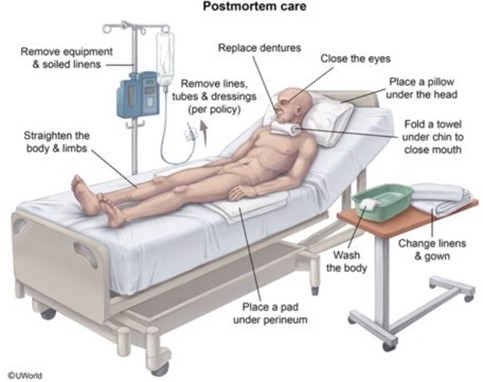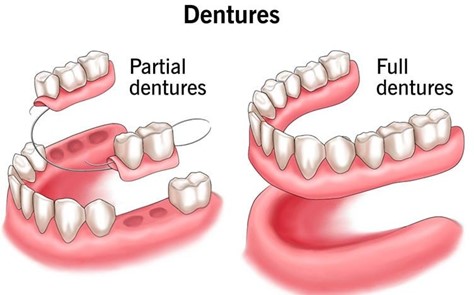A nurse is assigning care to an assistive personnel (AP). Which of the following tasks should the nurse delegate to the AP?
Educating a client on the use of a blood glucose monitor.
Interpreting a client's vital signs.
Performing a central line dressing change for a client.
Providing postmortem care for a client who has died.
The Correct Answer is D
Assistive personnel (AP), also known as unlicensed assistive personnel (UAP), can perform tasks such as assisting with activities of daily living, hygiene, and nutrition, as well as those tasks that support professional nursing assessments ². Providing postmortem care for a client who has died [d] is a task that can be delegated to an AP.
The other options are not tasks that should be delegated to an AP. Educating a client on the use of a blood glucose monitor [a] involves patient education, which is typically the responsibility of a licensed nurse.
Interpreting a client's vital signs [b] involves assessing the client's health status, which is also typically the responsibility of a licensed nurse. Performing a central line dressing change for a client [c] is a complex task that requires specialized knowledge and skills.

Nursing Test Bank
Naxlex Comprehensive Predictor Exams
Related Questions
Correct Answer is A
Explanation
The response by the accused nurse that demonstrates assertiveness is "I feel as though I met the standard of care. Would you tell me more about your concerns?" This response shows that the nurse is confident in their actions and is willing to listen to the concerns of the other nurse in a respectful and professional manner.
Option B is incorrect because it is defensive and does not address the concerns of the other nurse.
Option C is incorrect because it does not demonstrate assertiveness or confidence in the nurse's actions.
Option D is incorrect because it is confrontational and does not address the concerns of the other nurse in a respectful and professional manner.
Correct Answer is C
Explanation
An incident report should be filed whenever an unexpected event occurs. The rule of thumb is that any time a patient makes a complaint, a medication error occurs, a medical device malfunctions, or anyone— patient, staff member, or visitor—is injured or involved in a situation with the potential for injury, an incident report is required ⁴. In this case, the client's missing dentures would be considered a complaint and would require the nurse to complete an incident report.
The other options do not require an incident report. Disagreeing with the nurse manager about inadequate staffing [a], a staff member not arriving at the facility to work an assigned shift [b], and discovering that the client does not have advanced directives [d] are not situations that would require an incident report according to the information provided in my sources.

Whether you are a student looking to ace your exams or a practicing nurse seeking to enhance your expertise , our nursing education contents will empower you with the confidence and competence to make a difference in the lives of patients and become a respected leader in the healthcare field.
Visit Naxlex, invest in your future and unlock endless possibilities with our unparalleled nursing education contents today
Report Wrong Answer on the Current Question
Do you disagree with the answer? If yes, what is your expected answer? Explain.
Kindly be descriptive with the issue you are facing.
